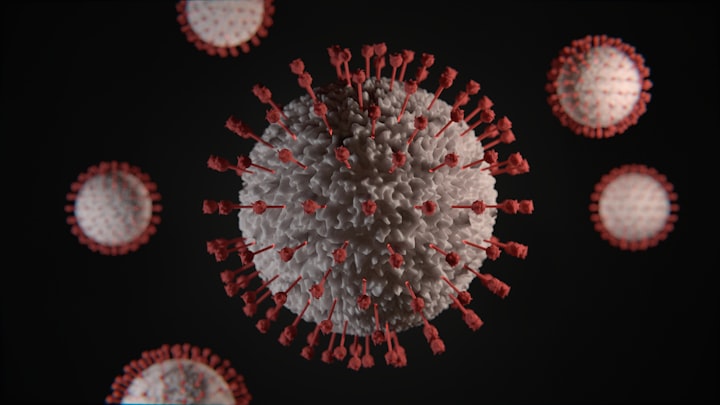The Secret Language of Microbes: Exploring the World of Microbial Communication
How Microbial Communication is Revolutionizing Our Understanding of the Microbial World and Its Implications for Human Health and the Environment

The Hidden World of Microbial Communication
The microbial world is an intricate and complex ecosystem of microscopic organisms that plays a vital role in the sustenance of life on earth. For many years, researchers have focused on studying the behavior of individual microbes, but recent studies have shown that these tiny organisms are capable of communicating with one another through various mechanisms. In this article, we will explore the fascinating world of microbial communication and the potential implications for human health and the environment.
What is Microbial Communication?
Microbial communication refers to the exchange of information between individual microbes or groups of microbes. It is a fundamental aspect of microbial behavior and plays a crucial role in various processes such as growth, survival, and pathogenesis. Microbes can communicate through various mechanisms, including chemical signaling, quorum sensing, and nanotubes.
Chemical Signaling
Chemical signaling is a widespread mechanism of microbial communication, and it involves the release of signaling molecules, such as hormones and neurotransmitters, by one microbe that is detected by another microbe. These signaling molecules can influence the behavior of the receiving microbe, triggering responses such as growth, movement, or the production of secondary metabolites. This process is critical for the coordination of cellular activities and the regulation of microbial communities.
Quorum Sensing
Quorum sensing is another mechanism of microbial communication, and it involves the detection of signaling molecules by a group of microbes. When a certain threshold concentration of signaling molecules is reached, the microbes can coordinate their behavior, leading to collective actions such as biofilm formation, virulence, and antibiotic resistance. Quorum sensing is particularly important for the survival of pathogenic bacteria, as it enables them to coordinate their attack on a host.
Nanotubes
Recent studies have shown that some microbes are capable of forming nanotubes, which are long, thin tubes that connect cells together. These nanotubes can facilitate the exchange of genetic material, nutrients, and signaling molecules between cells, enabling microbes to communicate and coordinate their behavior over long distances.
Implications for Human Health
Microbial communication has significant implications for human health, particularly in the context of infectious diseases. By understanding the mechanisms of microbial communication, researchers can develop new strategies for controlling the spread of bacterial infections. For example, interfering with quorum sensing could prevent the formation of biofilms, making it easier to eradicate bacterial infections. Similarly, disrupting the exchange of genetic material through nanotubes could prevent the spread of antibiotic resistance genes.
Microbial communication also has potential applications in the development of new antibiotics. Traditional antibiotics target individual microbes, which can lead to the development of antibiotic resistance. By targeting the communication mechanisms between microbes, researchers could develop new antibiotics that disrupt the coordination of microbial behavior, making it more difficult for bacteria to develop resistance.
Implications for the Environment
Microbial communication is also critical for the functioning of ecosystems and the health of the environment. Microbes play a crucial role in various processes such as nutrient cycling, carbon sequestration, and decomposition. By understanding how microbes communicate and coordinate their behavior, researchers can develop new strategies for managing environmental problems such as soil degradation and pollution.
For example, some microbes are capable of breaking down toxic pollutants, such as oil spills, by communicating and coordinating their behavior. By understanding the mechanisms of microbial communication, researchers could develop new strategies for harnessing the power of these microbes to clean up polluted environments.
Conclusion
Microbial communication is a fascinating and complex aspect of the microbial world that is still not fully understood. However, recent studies have revealed the potential implications of microbial communication for human health and the environment. By understanding the mechanisms of microbial communication, researchers can develop new strategies for controlling the spread of bacterial infections, developing new antibiotics, and managing environmental problems. The study of microbial communication is a rapidly growing field that has the potential to revolutionize our understanding of the microbial world and its impact on human health and the environment. By continuing to explore the intricacies of microbial communication, researchers can gain new insights into the behavior and interactions of these tiny organisms, opening up new avenues for the development of novel treatments and technologies. Ultimately, a deeper understanding of microbial communication has the potential to transform our approach to tackling some of the most pressing challenges facing society today, from infectious disease to environmental degradation.
About the Creator
The Truth Speaks
The Truth Speaks is a compassionate and empathetic individual who seeks to understand and support others in their journey towards living a more authentic life.






Comments
There are no comments for this story
Be the first to respond and start the conversation.